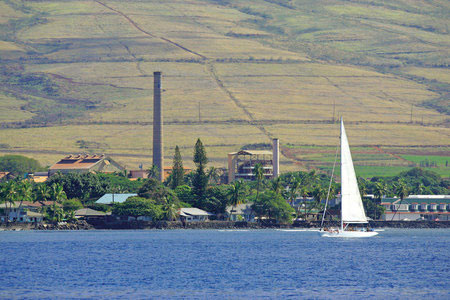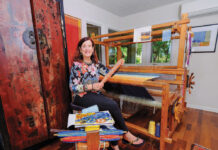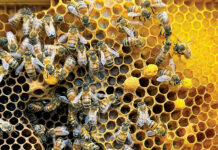Awaiting Prognosis
In our Summer 2005 issue (“Diagnosis: Health Care Anxiety,” MNKO Vol. 9, No. 2), we reported on plans for a new medical center to be built in one of Hawai‘i’s fastest-growing communities. If approved, Malulani Health and Medical Center will open around 2009; its parent organization, Malulani Health Systems, has 40 acres in Kihei, and a for-profit partner, Mainland-based Triad Hospitals, Inc., which will provide 80 percent of the estimated $212 million to build and equip the facility.
Maui is the only major Hawaiian Island with a single acute-care center, 50-year-old Maui Memorial. Patients sometimes wait hours—even days—for care, or must be flown to Honolulu hospitals. Malulani would improve that picture, adding 150 beds, a neonatal unit, a hyperbaric chamber for diving-accident victims, open-heart surgical suites, and a 20-bay emergency room with heliport.
The catch? Malulani must be granted a “certificate of need” (CON) from the State Health Planning and Development Agency, which operates a dozen hospitals throughout the Islands. One of them is Maui Memorial, which stands to lose revenue and personnel if a second hospital is built.
At the first of three hearings (the only one held on Maui), the Tri-Isle Subarea Health Planning Council voted in favor of Malulani after 16 hours of public testimony. At the second hearing, the Certificate of Need Review Panel voted against the application, citing concerns about staffing and fiscal viability. As this publication goes to press, a third and final panel is reviewing the application. By the time you read this, Malulani’s fate will likely have been decided. To learn more, visit www.hawaii.gov/health/shpda/shcertme.htm or www.malulani.org.
—Rita Goldman
 Up in Smoke
Up in Smoke
After five years of wrangling, Lahaina’s most memorable landmark now stands alone. The 200-foot-tall Pioneer Mill smokestack marks the site of the former mill near the busy intersection of Lahainaluna Road and Honoapi‘ilani Highway. Almost everything else from a century of sugar-cane processing in Lahaina has been dismantled or destroyed.
When James Campbell started the plantation in 1860, the little mill was mule-powered and ground stalks of cane on three wooden rollers. By 1924, the Pioneer Mill was big-time, with 15 iron rollers and 34,980 tons of processed sugar. Then—as elsewhere throughout the Islands—the industry’s profitability began to slide, and by 1999, the mill was grinding its last cane.
While most Lahaina residents cheered the mill’s historical significance, few were sure of its structural value. Rather than a solid floored building, it was more of a huge shed housing the mill’s innards. After the closure, there were reports of fires and vandalism in the deteriorated buildings.
Discussions began in 2001 on whether to raze the facility. The Maui County Cultural Resources Commis-sion, the State Historic Preservation Division, the Lahaina Restoration Foundation, and others considered its merits for preservation—maybe as a museum or offices.
But solutions and funding were slow in coming. Finally, it all came down, piece by piece: the factory and blacksmith buildings, machine and carpentry shops, sugar bin, cane washer, conveyor structure—37 buildings in all. But the smokestack was saved. When the overly safety-conscious Ka‘anapali Development Corporation lopped off 14 feet in January 2006 in preparation for other demolitions, the company was ordered to restore the stack. On June 3, 2006, the only other remaining piece, the 90-foot-tall boiler building, was blown to bits.
Although some Lahaina residents are glad to see the rusty old Pioneer Mill finally gone, for most, a feeling of sadness remains for a huge part of Maui’s history that was crushed beneath the heavy roller of time. At least we still have the smokestack.
—Sky Barnhart
Paniolo in Print
As part of the local landscape for more than 175 years, Hawai‘i’s paniolo (cowboys) have earned a reputation as the islands’ resident tough guys. Over the years, they have upheld this image as masculinity by mastering the art of ranching—from mounting untamed horses to wrangling steers.
Maui journalist Ilima Loomis has captured the spirit and history of these legendary men in her first book, Rough Riders: Hawai‘i’s Paniolo and Their Stories. Since 2000, she has listened to the life stories of over 30 paniolo throughout Hawai‘i, straight from the horsemen’s mouth. Whether conducting impromptu interviews at the kitchen counter of their home or riding beside them in the ranch truck, Loomis has captured details only a firsthand observer can provide. A rancher who used to “talk story” with his horses . . . hunting for “mountain meat” (wild pig) . . . ho‘au pipi (swimming cattle out to offshore ships in the pre-pier days) . . . these are just a few of the yarns covered in Rough Riders, a calabash of personal tales blended with the events that produced Hawai‘i’s unique breed of cowboy. “I wanted to bring their stories to life and take it out of the history book and hear it from people who actually lived the experience,” says Loomis.
According to Loomis, the true paniolo is both tough and tender. He is strong enough to wrestle long-horned wild bulls, yet gentle enough to deliver a calf. And while the ways of the traditional paniolo yield to modern equipment and technology, this book honors the men who have blazed the trail for ranching in Hawai‘i.
—Lehia Apana
Girl Meets Train
It could have been a scene from a movie—the girl on the railroad platform surrounded by swirling steam, falling in love. Shantel Medeiros had just been hired by the Lahaina Sugarcane Train.
“When I saw the engine pull in, my job trainer was talking to me and I didn’t hear one word she said,” Shantel recalled. “I was staring at that engine. I knew right away I wanted to be up there.”
She got her wish last year. After working as a ticket agent, conductor, and fireman, she became the first female engineer in the Sugarcane Train’s history. Trains are a new passion for the tomboy who grew up in West Maui tinkering with cars and motorcycles.
Her hands blackened with grease and soot, Shantel starts her day by lowering a burning scrap of rag into the belly of the 63-year-old locomotive, igniting the engine’s firebox and heating water for steam. For the next two hours, she’ll check levers and brakes while the engine builds up enough pressure to pull the 27-ton train. By the time she picks up her first passengers of the day, the engineer’s cab will be a sweltering 120 degrees.
Shantel will spend the 90-minute round trip from Ka‘anapali to Lahaina peering around the big green smokestack through slit-like side windows, keeping her hand near the brake and an eye on the tracks ahead. While the train blows a warning whistle as it chugs up to intersections, it has had the occasional low-speed collision with an impatient car. Shantel doesn’t want that happening to her.
“It’s really easy getting it to go,” she says. “It’s making it stop when you want it to stop that’s the trick.”
—Ilima Loomis
Slippahs
Ask a kama‘aina when rubber slippers appeared in the Islands, and you’ll probably get a blank look. As far as most Islanders can remember, slippers—also known as thongs, go-aheads, shower shoes, or zori—have been here forever.
But the real old-timers, once they think about it, will tell you that they don’t remember wearing slippers during their childhood; kids went barefoot most of the time, even in school, and wore real shoes to special events like the County Fair.
The traditional thong sandal goes back thousands of years in Japan and elsewhere, but the rubber version didn’t appear until World War II. A company that manufactured rubber plantation boots in Hawai‘i switched to making rubber sandals, apparently in response to a shortage of raw materials. Meanwhile, Japanese soldiers in Southeast Asia were cutting up
worn-out tires to make zori.
After the war, cheap, cool, and comfortable rubber slippers spread around the world, and in Hawai‘i they became part of daily attire. Practically everyone has at least one pair, leading to famous doorstep pile-ups from which many a partygoer has accidentally selected the wrong set of slippers at the end of a convivial evening.
—Jill Engledow
Aloha Festivals
You know the month is September; you’re just not certain it’s still 2006. For here you are, witnessing a royal procession from an era—just over a century ago—when Hawai‘i was an island kingdom.
No, you haven’t time travelled. You’ve just been fortunate enough to be on Maui during the Aloha Festivals, an annual celebration of Hawai‘i’s rich cultural heritage and traditions.
What began in Honolulu in 1946 as “Aloha Week” today encompasses 300 events held on all five major Hawaiian Islands throughout September and October: The pageantry of a Hawaiian royal court, its members attired in the red and gold of their chiefly ancestors. The stunning vocalizations of famous falsetto singers in concert. Hula performances and the ancient games of Makahiki. Arts and crafts, cultural demonstrations, a fishing tournament, and more. Nearly a million people attend the festival’s events—which this year include a western jamboree in Hana, celebrating the Aloha Festival’s 2006 theme: Na Paniolo Nui o Hawai‘i (The Great Cowboys of Hawai‘i).
Each island has its own Aloha Festivals schedule. On Maui, festivities begin September 16 with the investiture of the Royal Court—Mauians of Hawaiian ancestry who are designated as king, queen, prince, and princess. Moloka‘i has its own investiture September 28, while Lana‘i will host A Taste of Lana‘i and an Aloha Festivals 60th Anniversary Concert on September 29 at Dole Park. Anniversary concerts take place on Maui September 23 and on Moloka‘i September 30, and Maui’s celebration wraps up with a Moonlight Concert October 21. For more information, visit www.alohafestivals.com.





